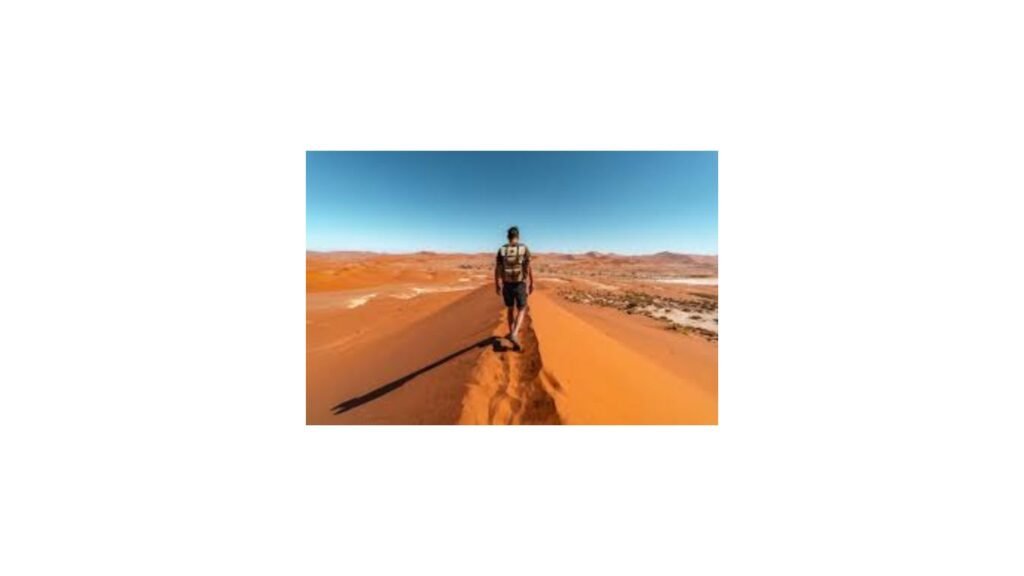A journey well planned is a journey half lived before it even begins. Behind every unforgettable adventure—whether it unfolds along the cobblestone alleys of Prague or the sun-drenched shores of Bali—lies a carefully curated itinerary. More than a checklist, a travel itinerary is a blueprint of intention, mapping not just where to go, but how to experience each moment meaningfully.
In an age where flights are booked in seconds and global destinations feel closer than ever, planning remains the cornerstone of fulfilling travel. Yet many travelers overlook the power of preparation, favoring spontaneity without structure. While serendipity has its place, a thoughtful itinerary gives shape to your journey, freeing you to explore without uncertainty.
Crafting the perfect travel itinerary is both an art and a science. It’s about aligning dreams with logistics, weaving desires into the fabric of time, and allowing space for both adventure and rest. Whether you’re traveling solo or with companions, on a weekend getaway or an extended expedition, this guide will walk you through each phase of planning—rooted in practical advice, rich insight, and personal reflection.
From defining your goals to organizing your days and embracing the unexpected, this article is your compass to building a seamless, enriching, and unforgettable travel experience.
Table of Contents
1. Defining Your Trip Goals
Before booking flights or building your schedule, you must understand why you’re traveling in the first place. Defining your travel goals ensures that every choice—from destination to daily activity—aligns with what you truly want to experience. This initial stage sets the tone for your entire journey, grounding your plans in purpose rather than impulse.
Determining Your Travel Style
Your travel style is the foundation of your itinerary. It influences how you move through the world—fast or slow, structured or spontaneous, immersive or relaxed. Are you chasing adrenaline in rugged landscapes, or do you seek serenity in coastal towns? Do you thrive on cultural exploration, culinary discovery, or nature’s solitude?
Solo travelers might pursue flexibility and introspection, while couples could prioritize romance, shared adventure, or relaxation. Families often value balance and security, with itineraries tailored to different energy levels. Meanwhile, luxury travelers may focus on curated experiences with minimal logistical hassle, and backpackers might stretch every euro for maximum immersion.
Reflect on past trips: What energized you? What felt overwhelming or unfulfilling? These insights help shape the framework of your travel narrative. Travel, after all, isn’t one-size-fits-all—it’s a deeply personal rhythm.
Setting Your Budget
Your budget serves as both boundary and liberator. It narrows your options while sharpening your focus on what truly matters. A well-defined budget ensures you’re not simply choosing destinations or accommodations based on desire alone, but balancing them against feasibility and sustainability.
Start by identifying core spending categories: transportation, lodging, meals, activities, insurance, and buffer expenses. Use tools like Budget Your Trip and Numbeo to estimate daily costs in various regions. Don’t overlook seasonal price changes—traveling to Europe in winter versus summer can mean a stark difference in costs.
Prioritize experiences over excess. Splurging on a once-in-a-lifetime hot air balloon ride over Cappadocia might mean fewer luxury meals—but richer memories.
Choosing Your Destination
Once your travel style and budget are in place, choosing a destination becomes an intentional decision rather than a whimsical one. Research not just based on popularity, but on compatibility with your goals. A destination’s rhythm—its pace, cultural tone, seasonal nuances—should harmonize with your intentions.
Consider visa requirements, weather, safety, accessibility, and timing. Want to attend a festival? Plan around it. Seeking solitude? Avoid peak seasons. Use government resources like Travel.State.Gov or your country’s travel advisory websites to stay informed on regulations and safety alerts.
Let inspiration spark your curiosity, but let purpose guide your choice. A thoughtfully chosen destination offers more than attractions—it offers alignment.

2. Research and Information Gathering
Once your travel goals are clear, it’s time to delve into discovery. Research is the bridge between inspiration and execution. It transforms vague daydreams into tangible experiences. This phase isn’t just about collecting names of places—it’s about building context, understanding logistics, and uncovering the soul of your destination.
Utilizing Online Resources
The internet is your most powerful travel companion during the planning phase. Use comprehensive platforms like Google Travel, Rome2Rio, and TripAdvisor to explore transportation options, top attractions, and user reviews. These resources offer practical overviews of routes, transit times, and crowd dynamics—crucial when shaping your itinerary.
For real-time experiences and visual previews, turn to YouTube channels hosted by local creators or seasoned travelers. Channels like The World Travel Guy provide firsthand visuals and insightful breakdowns of routes, costs, and dos and don’ts. Watching someone walk the streets you plan to visit brings clarity that written guides often lack.
Crowdsourced forums such as Reddit’s r/travel, Lonely Planet’s Thorn Tree, or Facebook groups like “Backpacking [Region]” also offer honest, up-to-date feedback from fellow travelers who have recently been there.
Remember: use multiple sources. What looks idyllic on a tour company’s site may be overhyped in reality. Cross-referencing builds confidence.
Reading Travel Guides and Blogs
While blogs offer personal insights and current updates, traditional travel guides bring structure and depth. Consider blending both. Renowned publishers like Lonely Planet, Rough Guides, and Rick Steves present reliable frameworks for cities, regions, and countries. These guides often include suggested itineraries, cultural insights, and essential logistics.
In contrast, travel blogs offer nuance—personal experiences, insider tips, offbeat gems, and candid recommendations. A blog may reveal that the best gelato in Rome isn’t near the Colosseum, but tucked away in a quiet Trastevere alley.
Pay attention to blog comment sections too—they often hold updated insights or alternative suggestions that can further enrich your itinerary.
Gathering Local Insights
Nothing beats a tip from someone who lives there. Whether it’s a local café owner, a hotel concierge, or a guide from a cultural center, locals offer perspectives that no search engine can replicate.
Reach out through Couchsurfing forums, Workaway communities, or even by messaging boutique hotels and guesthouses. Ask about local events, holidays, hidden gems, and customs. These conversations often uncover experiences untouched by mass tourism—like a hidden beach accessible only at low tide, or a temple that comes alive during a lesser-known festival.
If you’re staying in a culturally rich region, understanding etiquette and social norms is vital. Knowing when to bow, tip, or remove shoes isn’t just polite—it fosters genuine connection and respect.

3. Building Your Daily Schedule
With your research in hand, the next step is crafting the heartbeat of your trip—the daily rhythm. This is where your travel itinerary becomes a living document, organizing your time while allowing space to breathe. A well-structured day maximizes enjoyment, minimizes stress, and creates a natural flow that reflects your style and pace.
Prioritizing Must-See Attractions
Every destination has its icons—the places that drew you in, the moments you envisioned long before booking a ticket. These are your trip’s anchors. Begin by listing the top attractions or experiences that align with your goals. Whether it’s exploring the ancient ruins of Petra, sailing through the Norwegian fjords, or wandering the art-laced alleys of Buenos Aires, give these highlights pride of place.
Schedule high-priority activities during the early part of the day when your energy and focus are at their peak. Mornings often offer smaller crowds, better light for photography, and more room for spontaneity later.
Avoid overloading your schedule with too many big-ticket items in one day. The key to a satisfying travel itinerary isn’t quantity—it’s depth of experience.
Allocating Time for Activities and Rest
Balance is essential. Without built-in rest, even the most thrilling itinerary will lead to burnout. Allocate realistic timeframes for each activity, including meals, breaks, and transitions. If you’re visiting a city rich in museums or historical sites—like Vienna or Istanbul—you’ll need mental and physical recovery between deep cultural immersions.
Leave room for wandering. Not every moment must be structured. A lazy afternoon in a Parisian café or an impromptu stroll through a Moroccan souk can offer more than any tour.
For longer trips, consider inserting “rest days” or lighter agendas every few days. These allow you to recalibrate and truly absorb your experiences.
Factoring in Travel Time and Logistics
Underestimating travel time is one of the most common mistakes in itinerary planning. Use apps like Google Maps, Rome2Rio, or local transit websites to determine realistic commute durations. Always add a buffer—especially in cities where traffic, lineups, or delays are common.
Check opening hours, ticketing policies, and time-specific reservations for attractions. A museum may close earlier than expected, or a popular viewpoint may only be accessible during certain hours.
If your itinerary includes inter-city travel—by train, bus, or air—consider those days as lighter in activity. Arrivals and check-ins consume time and energy. Plan shorter, local experiences or free exploration for those transitions.
4. Booking and Reservations
Once your schedule is sketched out, it’s time to make it real. Confirming key bookings early helps secure better rates, reduces last-minute stress, and brings structure to your itinerary. This stage isn’t just about locking in dates—it’s about smoothing the path so you can focus on the journey itself.
Securing Flights and Accommodation
Airfare is often the first and largest booking you’ll make. Use fare comparison tools like Google Flights, Skyscanner, or Hopper to track and predict price trends. Midweek flights often cost less, and flying into alternative airports can offer significant savings without major inconvenience.
Accommodation should reflect both your budget and your travel style. Boutique hotels offer charm and curated hospitality; hostels provide community and affordability; vacation rentals (like Airbnb or Vrbo) give privacy and a local-living feel. Use Booking.com, Agoda, and Expedia to compare prices, read reviews, and check cancellation policies.
Book accommodations early for popular destinations or peak travel seasons. Choose central locations to minimize transit time and maximize your access to the city’s heartbeat.
Reserving Tours and Activities
For iconic or seasonal experiences—like the Inca Trail, hot air ballooning in Cappadocia, or entry to the Alhambra in Granada—early reservations are non-negotiable. These activities often sell out weeks or even months in advance.
Platforms like GetYourGuide, Viator, and Airbnb Experiences offer a wide range of options, from group excursions to intimate local-led adventures. Check for reviews, refund policies, and accessibility details. Don’t hesitate to book directly through local operators if their reputations are solid—it often supports the local economy more directly.
If you prefer a more spontaneous flow, reserve only your high-priority experiences ahead of time, and keep a list of potential add-ons to book on the go.
Managing Transportation
Efficient travel hinges on knowing how you’ll move from place to place. For countries with well-developed rail systems, such as Japan or much of Europe, booking rail passes like the JR Pass or Eurail in advance can save money and time. In regions where buses dominate, like parts of South America or Southeast Asia, services like 12Go Asia or Busbud provide schedules and booking options.
For urban transportation, download city-specific transit apps or check if local passes offer unlimited rides. If driving, research local regulations, required documents, and parking availability.
Keep all transport confirmations—flights, trains, buses, transfers—in a centralized folder, accessible both online and offline.

5. Fine-Tuning and Flexibility
An expertly crafted itinerary is not carved in stone—it breathes with the rhythm of the road. Fine-tuning your schedule and allowing room for flexibility ensures that your trip flows naturally, adapts to the unexpected, and leaves space for spontaneity. This is where your travel itinerary shifts from structured framework to dynamic experience.
Building in Buffer Time
Every seasoned traveler knows that delays are inevitable. A rainstorm disrupts a ferry schedule. A border crossing takes longer than expected. A café turns out to be so good you want to stay longer.
Buffer time—intentional open space in your schedule—allows you to absorb these changes without panic or stress. Aim to include at least 30–60 minutes between major activities, especially when transportation is involved.
For long-haul flights or connections across time zones, avoid scheduling anything demanding on arrival day. Give yourself time to settle, adapt, and adjust your internal clock.
On multi-day trips, inserting lighter “recovery” days after especially busy ones can help preserve your energy and enthusiasm. These aren’t wasted days—they’re what make the rest of the trip sustainable.
Planning for Contingencies
Contingency planning is the quiet art of foresight. It doesn’t mean expecting disaster—it means being ready for disruption.
What if your tour is canceled? What if your train is delayed? What if your phone is lost or stolen? Preparing for these scenarios helps you stay grounded in the face of uncertainty.
Carry backup copies of essential documents, both digital (in cloud storage) and physical (in your luggage). Save emergency contacts, embassies, and local service providers in your itinerary.
Download offline maps and translation tools like Google Translate and Maps.me, particularly for destinations with spotty connectivity. Having a contingency doesn’t mean you’ll need it—but not having one could derail your day.
Allowing for Spontaneous Adventures
While planning creates the bones of your journey, spontaneity gives it soul. Some of your most unforgettable memories may come from moments that weren’t on your schedule: a local street market stumbled upon by chance, a hidden temple suggested by a stranger, a night of dancing in a town you hadn’t intended to stay in.
Leave open blocks in your itinerary—especially in culturally rich destinations where wandering often leads to wonder. Be willing to rearrange plans if something magical comes along. Trust your instincts and allow your travel experience to evolve organically.
Structured freedom is the sweet spot. It’s what separates a rigid checklist from a true adventure.
6. Organizing Your Itinerary
With plans in place and flexibility accounted for, it’s time to organize everything into a clear, accessible format. How you compile and carry your travel itinerary can significantly impact your peace of mind on the road. A well-organized itinerary isn’t just practical—it empowers you to travel with confidence, clarity, and control.
Digital vs. Physical Itineraries
The first decision: how do you want to carry your itinerary? Digital tools offer convenience, quick edits, and cloud access. Physical formats provide tactile security and don’t rely on battery life or signal.
Digital itineraries are ideal for tech-savvy travelers. They allow for syncing across devices, easy sharing with companions, and instant updates. Cloud-based platforms also help centralize all your reservations, links, and notes in one location.
Physical itineraries, however, remain valuable in areas with unreliable internet or when navigating unfamiliar languages. A printed version ensures you always have access to vital information—even if your phone dies or your SIM card stops working.
For many travelers, a hybrid approach works best: digital for daily access and a physical copy tucked into a daypack for emergencies.
Using Itinerary Apps and Tools
There’s no shortage of tools designed to simplify travel planning. The best itinerary apps let you compile all your bookings, maps, and notes into a coherent, easy-to-navigate format.
- TripIt: Automatically organizes confirmation emails into a streamlined itinerary.
- Wanderlog: Combines trip planning, maps, and collaborative lists—ideal for group travel.
- Notion: Offers customizable templates for visually rich and detailed itinerary layouts.
- Google Docs/Sheets: Classic, flexible, and shareable—great for those who prefer minimalism with full control.
Choose tools that fit your level of comfort and need for customization. Bonus points for apps that work offline and support real-time updates.
Creating a Centralized Document
No matter what tools you use, the key is centralization. Your itinerary should be a single, organized source that contains:
- Flight and accommodation details
- Daily schedules with time blocks
- Transportation and transfer info
- Reservation and ticket confirmations
- Emergency contacts and addresses (in both local and English text if needed)
- Maps, directions, and key landmarks
- Health and safety notes (vaccination proof, entry requirements)
Keep everything in chronological order. Color-code or label activities by type—cultural, leisure, nature, dining—for quick visual reference. For longer trips, consider creating separate tabs or folders by city or region.
A centralized document turns your travel vision into a navigable plan—and brings peace of mind from the moment you board the plane.

7. Final Preparations and Tips
As your departure nears, the final days of preparation are crucial. It’s not just about what you bring or confirm—it’s about setting yourself up for a seamless, stress-free journey. These finishing touches complete your travel itinerary, ensuring that every detail, no matter how small, is accounted for.
Packing Essentials
Packing should reflect your itinerary—not just the weather forecast. Start with a checklist tailored to your destination and activities: hiking boots for treks, formalwear for fine dining, modest clothing for temples, or swimwear for beach days.
Invest in packing cubes to stay organized, and roll your clothes to save space and reduce wrinkles. Always pack a change of clothes in your carry-on along with medications, chargers, documents, and valuables.
Bring copies of key documents: passport, visa, travel insurance, itinerary, and emergency contacts. Store them digitally and physically. Include a small first-aid kit, a universal power adapter, reusable water bottle, and any destination-specific items like water purification tablets or insect repellent.
Tailor your packing to both function and comfort—it will directly impact how easily you can follow your itinerary on the ground.
Confirming Bookings
In the final 72 hours before departure, confirm all your bookings. Double-check flight details, accommodation check-in times, activity reservations, and airport transfers. Contact providers if necessary—especially small or independent ones—to ensure nothing has changed.
Take screenshots of all confirmations and keep them in a dedicated folder on your phone. Internet issues can arise, and instant access can be a lifesaver when navigating airports or border crossings.
Check time zones, travel dates, and addresses to avoid common slip-ups like arriving a day early or late due to overnight travel.
Staying Safe and Informed
Safety is often the last thing travelers think about—but it should be foundational. Register your trip with your country’s embassy or foreign office if available (like the U.S. STEP program). Keep a printed list of emergency numbers including local emergency services, embassy contacts, and insurance providers.
Download offline maps and essential apps before you leave. If you’re traveling internationally, consider using a VPN to protect your data while accessing public Wi-Fi.
Stay informed with local news, weather alerts, and travel advisories. Sign up for SMS or email notifications from your airline or tour providers.
Finally, share your travel itinerary with someone you trust. Whether you’re going for a week or several months, knowing someone has your details offers peace of mind—for both you and your loved ones.
FAQ
How far in advance should I start planning my travel itinerary?
Ideally, begin planning your itinerary 3 to 6 months before your trip, especially for international travel or peak-season destinations. This allows time for researching visa requirements, booking accommodations, and securing reservations for in-demand experiences. For more complex itineraries—such as multi-country trips or adventure travel—starting earlier is even better.
How detailed should my travel itinerary be?
A well-balanced itinerary includes essential details without being rigid. Highlight core activities, travel times, and logistics, while leaving room for flexibility. Over-planning every minute often leads to burnout. Aim for structure in the mornings and openness in the afternoons or evenings.
What should I do if plans change mid-trip?
Embrace adaptability. Use itinerary apps to shift bookings or reallocate time as needed. Always have backup activities in mind and maintain contact details for tour operators or accommodations. Travel rarely goes exactly as planned—resilience and resourcefulness make all the difference.
Is it worth making an itinerary for short trips?
Absolutely. Even weekend getaways benefit from thoughtful planning. A clear itinerary helps maximize your time, reduces indecision, and ensures you don’t miss key experiences—especially when time is limited.
How can I make a travel itinerary for group trips?
Start by discussing goals and interests as a group. Use shared documents (like Google Sheets or Wanderlog) for transparency and collaboration. Assign roles, build in compromise, and consider everyone’s energy levels and preferences. A well-structured group itinerary balances structure with freedom.
Do I need travel insurance for every trip?
Yes—especially for international travel. Travel insurance covers medical emergencies, trip cancellations, lost baggage, and unexpected events. It’s one of the smartest and most overlooked investments in any itinerary.

